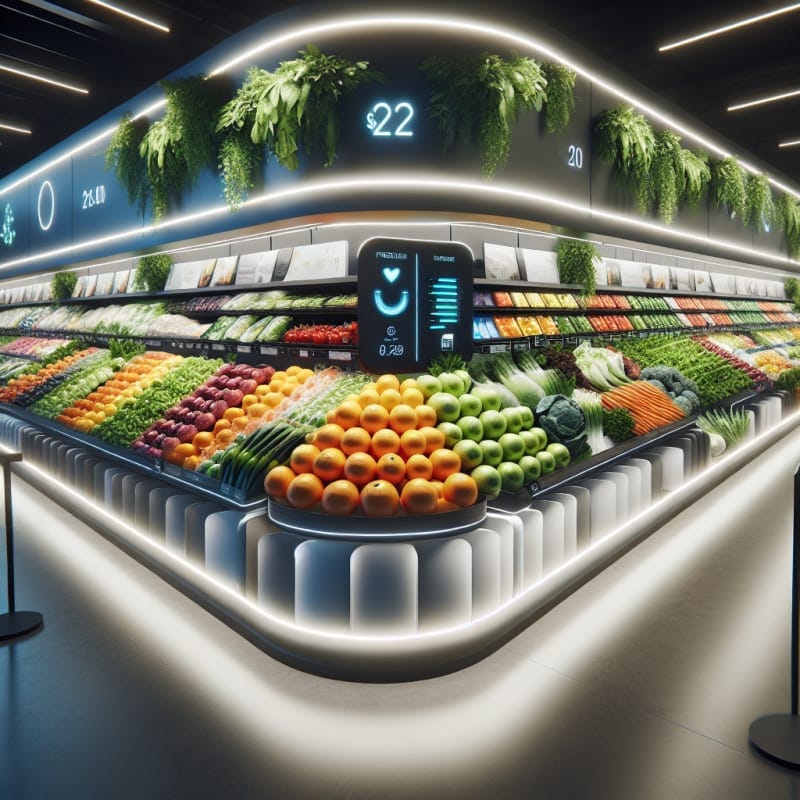The Rise of Gene-Edited Fruits and Vegetables in 2025: What Consumers Need to Know
In 2025, grocery stores are preparing for a major shift — the arrival of gene-edited whole fruits and vegetables. Unlike earlier generations of genetically modified foods that mostly involved corn, soy, and canola used in processed products, this new wave of CRISPR-edited produce includes items like salad greens, strawberries, and tomatoes sold fresh to consumers. These innovations promise better taste, longer shelf life, and improved climate resilience — but they also raise new questions about labeling, safety, and consumer choice.
Why Gene-Edited Produce Is a 2025 Food Revolution
According to Genetic Literacy Project, 2025 marks a turning point in food technology. Advances in CRISPR-Cas9 and other gene-editing tools have made it faster and cheaper to modify plants without introducing foreign DNA. This distinction — editing existing genes rather than adding new ones — is key to how regulators and consumers view these foods.
Reports from The Food Institute highlight that major food companies are investing in gene-edited crops to meet sustainability goals and reduce food waste. For example, strawberries that resist bruising and lettuce that stays crisp longer could significantly cut spoilage across supply chains.
From Lab to Table: How CRISPR Is Changing Food Production
CRISPR (Clustered Regularly Interspaced Short Palindromic Repeats) allows scientists to “edit” plant DNA with precision. Instead of inserting genes from other species, CRISPR can turn off or tweak existing genes to enhance flavor, nutrition, or resilience. This process is often described as “accelerated breeding.”
As outlined in the ENGA New GMOs Market Report 2025, these technologies are being applied to crops like:
- Tomatoes with boosted vitamin D content
- Strawberries that resist mold and bruising
- Potatoes with reduced browning and acrylamide formation
- Leafy greens that stay fresh longer after harvest
These innovations aim to address both climate resilience and nutrition security, two major global challenges.
Consumer Attitudes Toward GM Whole Produce
Consumer perception of genetically modified foods has evolved. In the past, GMOs were often associated with industrial agriculture and processed foods. But as Technavio’s market analysis shows, younger consumers are increasingly open to biotechnology if it supports sustainability and transparency.
Social media discussions in 2025 reflect a more nuanced debate — not simply “pro” or “anti-GMO,” but focused on how gene editing is used and whether consumers are properly informed. Many want clear labeling and traceability so they can decide for themselves.
Labeling and Regulation: What’s Changing in 2025
Regulatory frameworks are evolving to keep pace with innovation. The ENGA report notes that some gene-edited crops may be exempt from traditional GMO labeling if no foreign DNA is introduced. However, consumer advocacy groups argue for consistent labeling across all modified foods to ensure transparency.
In the United States and the European Union, regulators are reviewing how to define and label “new GMOs.” The outcome will shape how these products appear on supermarket shelves and influence global trade in fresh produce.
Are Gene-Edited Fruits and Vegetables Safe?
Safety is the top concern for many shoppers. Scientific consensus, including reviews cited in the ENGA 2025 report, indicates that gene-edited foods are as safe as conventionally bred varieties when properly tested. Because CRISPR edits are targeted and precise, unintended effects are less likely than with older modification methods.
Still, experts emphasize the need for ongoing monitoring and transparent communication. Consumers want assurance that safety testing follows rigorous standards similar to those used by the FDA and EFSA for all new food products.
Organic vs. Gene-Edited Produce
One of the biggest questions for shoppers is whether gene-edited foods can be considered “natural.” Organic certification currently excludes gene-edited crops, even if no foreign genes are added. This creates a clear distinction in the marketplace — but also confusion for consumers who associate “non-GMO” with “healthy” or “sustainable.”
In 2025, expect to see new labels like “gene-edited for sustainability” or “precision-bred,” designed to highlight benefits without misleading buyers.
Climate-Resilient Crops and the Future of Farming
Extreme weather, drought, and pests are putting pressure on global agriculture. Gene editing offers tools to make crops more resilient to these challenges. For example, drought-tolerant lettuce and heat-resistant tomatoes can help maintain yields as temperatures rise.
According to Food Institute’s 2025 Food Trends report, farmers are increasingly turning to biotechnology to reduce chemical inputs and adapt to climate change. These innovations could make food systems more sustainable — but only if consumers trust and adopt them.
How Food Scan Genius Helps You Choose Smarter
As the food landscape becomes more complex, tools like Food Scan Genius are helping shoppers make informed decisions. The app lets users scan product labels to see whether an item contains gene-edited ingredients, allergens, or additives. It also provides background on how each ingredient was produced.
“I started using Food Scan Genius because I wanted to know what’s really in my food. It’s amazing how easy it is to see if something is gene-edited or not — and I love that it gives me the science behind it.” — Maya, Food Scan Genius user
With transparency becoming a top consumer demand, apps like this empower people to align their purchases with their values — whether that means choosing organic, supporting innovation, or balancing both.
Common Questions About Gene-Edited Fruits and Vegetables
1. What gene-edited fruits and vegetables are coming to market in 2025?
Expect to see gene-edited strawberries, tomatoes, and leafy greens with longer shelf life and improved nutrition. These are among the first whole produce items developed using CRISPR technology.
2. Are gene-edited fruits safe to eat?
Yes. Studies referenced in the ENGA 2025 report show that gene-edited foods are as safe as traditional varieties when tested under established food safety protocols.
3. How do gene-edited foods differ from traditional GMOs?
Traditional GMOs often involve inserting genes from other species. Gene editing, by contrast, makes precise changes within the plant’s own DNA — similar to natural mutations but guided by technology.
4. Will gene-edited foods be labeled in 2025?
Labeling rules vary by region. Some countries may exempt gene-edited crops from GMO labels if no foreign DNA is added, while others push for full disclosure to maintain transparency.
5. Can gene-edited foods be organic?
No. Current organic standards exclude all genetically modified and gene-edited organisms, even if the changes are minor or naturally derived.
6. How can consumers make informed choices?
Use trusted resources like Food Scan Genius to check product details, follow regulatory updates, and stay informed about how your food is produced.
Takeaway: Transparency and Trust in the Age of Gene-Edited Foods
Gene-edited fruits and vegetables are set to redefine what “fresh” and “natural” mean in 2025. They offer exciting benefits — from reduced waste to better nutrition — but also highlight the need for clear labeling and open communication. As biotechnology moves from the lab to the produce aisle, consumers deserve both innovation and transparency.
Whether you embrace or avoid gene-edited foods, understanding how they’re made helps you make smarter choices. Tools like Food Scan Genius make that easier than ever, ensuring you know exactly what you’re putting on your plate.





